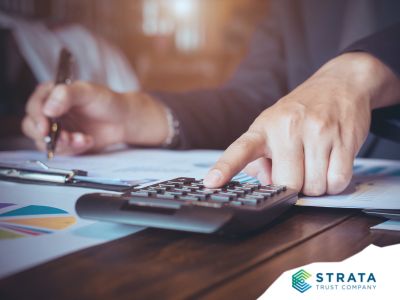The IRS requires all IRA holders aged 72 or older to withdraw a certain amount of money each year from their IRAs (not including Roth IRAs). Referred to as a required minimum distribution (RMD), this process is intended to ensure that tax-deferred retirement savings are not immune from taxation past you or your beneficiary’s lifetime.
Fortunately, there are several methods to choose from when it comes time to take your RMD – so you can choose whichever option works best for your retirement plans.
The deadline for taking your RMD is December 31 of the current calendar year. For STRATA account holders, RMD requests were due by December 1, 2022, in order to make the December 31 deadline. If you have not started the process yet, there is still time – resources to get started are at the end of this article.
Below are four strategies that are accepted methods for taking your RMD which may help mitigate anticipated losses and/or avoid tax penalties.
1. Delaying your RMD
If you turned 72 in 2022, the deadline for taking your RMD for 2022 is April 1, 2023. You may want to wait to liquidate an investment until after you take your RMD to see if your investments can recoup some lost value. If you wait until 2023 to take your first RMD, however, know that you still must take your second RMD by December 31, 2023 – saddling you with two taxable distributions in 2023.
2. Taking an In-Kind Distribution
Depending on your IRA investments, you may want to consider taking an in-kind distribution to avoid having to liquidate an investment at an inopportune time. You can ask to have your investment transferred to a taxable account in your name – this will still satisfy your RMD, so long as the in-kind transfer is at least equal to the amount of RMD you must take. After you pay tax on the value transferred to the taxable account, depending on the investment, any future increase in value will be subject to the long-term capital gains tax rate if you hold the asset in the taxable account for more than a year.
3. Aggregating IRAs or Allocating Investments for RMDs
If you have multiple IRAs, one of the best strategies to avoid liquidation when an investment’s value has dropped significantly or when an investment is projected for long-term growth is to aggregate your RMD amounts for all your IRAs and take the total amount due from the IRA(s) with the most cash available or least volatile investments. Tax laws require that an RMD be calculated separately for each IRA, but you may withdraw that amount from any of your IRAs, except a Roth IRA. If you have multiple IRAs, you may want to designate at least one as having short-term, low-risk investments or significant cash reserves to cover the RMD payments each year.
4. Making a Qualified Charitable Distribution (QCD)
IRA owners age 70½ and older may take a tax-free distribution of up to $100,000 per year if it is paid directly from their Traditional IRA to a qualifying charity. This Qualified Charitable Distribution (QCD) can be used to satisfy your RMD for the year. This tax advantage is lost if you take receipt of the funds first, so be sure to instruct your IRA custodian to pay the distribution directly to the charity.
Take Action
The IRS RMD deadline is rapidly approaching – start planning your strategy today for 2022 and beyond if you haven’t already. Because illiquid investments might slow the processing time, you may want to connect with your financial advisor to learn the best approach for your specific situation. Our suite of financial calculators can help you determine how different financial scenarios may impact your retirement plans, giving you helpful insight when deciding on your RMD.
Learn more about taking your RMD with STRATA with the help of our brand-new Knowledge Center. Our self-directed IRA experts are also available to answer any questions you may have regarding the RMD process for your STRATA account. To request an RMD from your STRATA account please select the IRA Distribution Request that applies to your IRA account.











